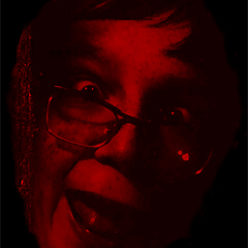Solving (some of) the Quantum Physics & Relativity “Mysteries”
A few months ago (2021) I wanted to explain why certain maths tools are used in Quantum Physics and Relativity theories, as I thought it could help some students (or merely interested people) to better grasp certain physical phenomena, as well as their mimicking math tools, in a more intuitive way.
It made me realize that this could also help to understand (and de-mystify) some of the seemingly non-logical ideas in Q.P. and Relativity. So I made a new series (probably the last one) of 18 videos which, I believe, take a new approach to explain what REALLY happens in the Physical World. It’s definitely not a new theory (I’m not smart enough for that!), but just a new perspective to interpret existing results and equations.
In these videos I try to answer the following questions, in a logical, rational way, as opposed to just saying “that’s the way it is”:
- wave/particle duality
- superposition of states (Schrödinger’s cat, Young experiment, etc….)
- wave function collapse
- stochastic character of quantum mechanics
- twin’s paradox and special relativity
- spacetime curvature due to presence of mass/energy
- objective definition of space and time (and why spacetime…)
- derivation of constant speed of light
- what happened before the Big Bang ?
- etc.
It is a real journey (if you really want to follow my ideas, you HAVE TO watch the videos in order from the start – see list below)… The first 7 videos use almost no maths. The remaining 11 give more detailed explanations, with simple maths. You’ll find the videos themselves either on Youtube (subtitles available, with ads, see playlist link below) or on this web site page (in English) or on this web site page (in French, including dubbed videos).
Here is the list :
- Preliminaries (3 videos)
- Defining Space
- Defining Time
- Explaining (some of) the Q.P. Mysteries
- Explaining (some of) the Relativity Mysteries
- Why use complex numbers ?
- Why use Hilbert Space Vectors ?
- Why use Hermitian Operators ?
- Examples of usage of Complex Numbers
- The T.U.P. definition and applications
- Using Complex Numbers to explain Q.P. mysteries
- Covariance/contravariance
- Why use Tensors ?
- Why use Metric Tensors ?
- Using the T.U.P. to derive Einstein Field Equations
- Constant speed of light (postulate or derivation?)
… and here is the playlist link on YouTube:
Solving (some of) the Quantum Physics & Relativity “Mysteries”
You will also find below some older series of videos which I made before the series above. One explains why Quantum Physics is used by physicists despite of its “weirdness” (and why it is weird…). The other one explains in details the Special Relativity’s “Twin Paradox” using simple maths.
The Quantum Mystery
A couple of years ago I’ve made another series of videos (7 !), which attempt to explain why the Quantum Theory is weird and why physicists still use it (or its derivatives) in a “standard model” to describe the world we are living in.
As opposed to many publications, articles, tutorials, etc. that I ‘ve seen in particular on the net, these videos let the viewers understand and derive by themselves the weirdness of Q.T.
That way it is the viewer who will determine and understand rationally the causes and consequences of using a theory such as Q.T. to describe the rules of our universe.
Here is the playlist which contains all the videos, to be watched in order
(you can see the list by clicking on the top left of the image).
Enjoy (or not) !
The Special Relativity Mystery
This is a second series of videos I’ve made a couple of years ago. These are about Einstein’s Special Relativity, and in particular the Twins Paradox. I felt that some of the explanations I found on the internet were incomplete (at best), and therefore decided to give my version of its derivation.
Here is the playlist which contains all the videos, to be watched in order
(you can see the list by clicking on the top left of the image).
